New Museum of Contemporary Art
Senior Curator
1995 - 2006
New York, NY
More than a decade after his Extended Sensibilities (1982-83) pioneered the then-taboo subject of sexual identity and art, the New Museum's founder, Marcia Tucker, named Dan Cameron to be Senior Curator, in effect presiding over the museum's transition from alternative space to full-fledged museum. To signal the visible change in programming, he mounted major retrospective exhibitions of such American artists as Carroll Dunham, Paul McCarthy, Faith Ringgold, Carolee Schneemann, David Wojnarowicz, and Martin Wong, alongside mid-career surveys and special projects by a range of international artists: Bili Bidjocka, Candice Breitz, Maria-Fernanda Cardoso, Wim Delvoye, Eugenio Dittborn, Mona Hatoum, Jose Antonio Hernandez-Diez, Los Carpinteros, Nalini Malani, Cildo Meireles, Aernout Mik, Rivane Neuenschwander, Marcel Odenbach, Pierre at Gilles, Keith Piper, Doris Salcedo, Nedko Solakov, Francesco Vezzoli, William Kentridge and Xu Bing. Two large-scale group exhibitions (listed separately) were also integral to the Cameron decade: Living inside the Grid (2002) and East Village USA (2005).
"I decided to take all of the research and energy that had propelled my independent projects during the prior decade, and bring both local and global concerns together in a program intended to galvanize the New Museum’s desire to expand its exhibitions calendar, its audience and its physical space."




Carolee Schneemann: Up To and Including Her Limits
The first-ever U.S. museum survey of Schneemann’s (1939-2019) work included paintings, drawings, watercolors, constructions, photographs, videos, performance documentation and sculptural installations. Works on view ranged from her 1959 Painting to the 1994 mixed-media installation Mortal Coils, and included the 1963 series Eye Body and the title performance-video installation Up To and Including her Limits. The 68-page catalog includes essays by Dan Cameron, David Levi-Strauss, and Kristine Stiles.




Enclosures: Installations by Teresita Fernandez, Nedko Solakov and Hale Tenger
To coincide with the Schneemann exhibition, three artists whose work is conceived in the form of room-scale installations created new projects for the occasion. The Fernandez work was a room in the form of an indoor swimming pool, the Solakov a wallpapered parlor covered in half-hidden graffiti, while Tenger produced an ambiguous waiting area where a rolled-up rug suggested that the most recent occupant was hidden inside.




Remota: Airmail Paintings by Eugenio Dittborn
(in collaboration with the Museo Nacional de Bellas Artes, Santiago de Chile)
At the height of the Pinochet dictatorship in Chile, Eugenio Dittborn (b. 1943) began to produce works that would circumvent both the state censors as well as the cultural boycott imposed on Chile from the outside. Produced from imagery whose range included historical engravings, old police photos, drawings by schizophrenics and current mass media, the airmail paintings, once made, were folded and placed in customized envelopes, which were then exhibited alongside the works. The 240-page catalog, designed by Guillermo Feuerhake and Eugenio Dittborn, contains essays by Dan Cameron, Guy Brett, Sean Cubitt, Gonzalo Munoz, Gerardo Mosquera, Robert Merino and Adriana Valdes.



Unland/Doris Salcedo
(in collaboration with SITE Santa Fe, New Mexico)
This exhibition, which inaugurated the New Museum’s expanded second-story galleries at its 583 Broadway address, was the result of a three-year collaboration after the artist responded positively to an invitation to produce a new body of work for the museum. Since the early 1990s, Salcedo’s (b. 1958) work had been increasingly focused on the violence then endemic in Colombia, where she lives and works. Unland consisted of three lengthy tables that had been ingeniously threaded with thousands of individual human hairs, producing an almost imperceptible effect of loss and absence. The 80-page exhibition catalog, designed by Paul Carlos, contains essays by Charles Mereweather and Dan Cameron.






Sweet Oblivion: The Urban Landscape of Martin Wong
(in collaboration with Illinois State University Galleries, Normal, IL)
Painter Martin Wong (1946-1999) was born in San Francisco to parents from Hong Kong. He studied ceramics and joined the drag troupe Angels of Light before moving to NYC in the early 1980s to become a painter. Wong's politically charged, highly personal depictions of his neighbors, empty lots, graffiti-covered walls and tales relayed by his neighbor, playwright and former convict Miquel Piñero, soon became timeless depictions of a New York on the brink of profound economic and demographic changes. The 86-page catalog, co-published by Rizzoli, contains essays by Barry Blinderman (co-curator), Lydia Yee, Carlo McCormick, Yasmin Ramirez and Marcia Tucker.




Bili Bidjocka, Los Carpinteros, Rivane Neuenschwander
This exhibition introduced New York audiences to five young artists from Brazil, Cameroon and Cuba, by dividing the museum’s second-story gallery into three separate rooms, in each of which an invited artist created a site-specific installation. Bidjocka sought to cultivate a living pond, Los Carpinteros produced large drawings and sculptures using parts from Lower East Side hardware stores, and Neuenschwander produced multiple works using sweepings from the empty space.
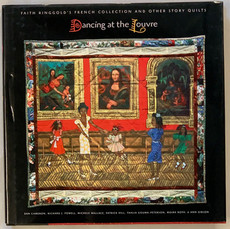


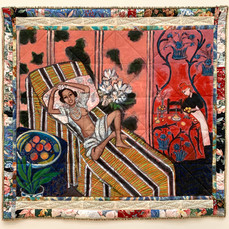


Faith Ringgold: Dancing at the Louvre
This overview of Ringgold’s unique practice, which combines painting and quilt-making, aspired to structure a compelling historical narrative around race and identity in US society from the civil war era to the present. Taking as its focus the French Collection series, which employed revisionist modern art history to trace the life of its female protagonist, the exhibition also included well-known early Ringgold works as Tar Beach and The Flag is Bleeding. The 170-page catalog, published in partnership with University of California Press, contains essays by Dan Cameron, Richard Powell, Marcia Tucker, Michelle Wallace, Patrick Hill, Thalia Gouma-Peterson, Moira Roth and Ann Gibson.
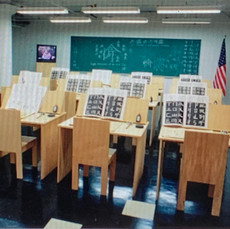


Xu Bing: An Introduction to New English Calligraphy
Xu Bing is one of the most esteemed Chinese artists of the generation that mostly lived abroad during the 1990s. His installation Book from the Sky (1994) is widely considered a landmark work of the mid-1990s, and An Introduction to New English Calligraphy (1998) follows the opposite trajectory. Instead of being based on illegible characters that appeared to be Chinese, the newer work centered on a video lesson for calligraphic brush and ink, along with practice desks with actual brushes, paper and ink for users to practice making Chinese characters, which on closer inspection turn out to be perfectly legible English.
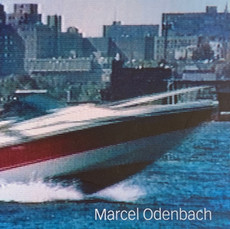
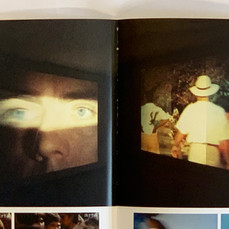

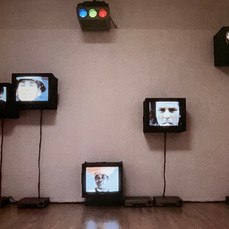
Marcel Odenbach
Although widely celebrated in Europe as one of the pioneers of German video art in the 1970s, Odenbach (b. 1953) is less known in the US, making this his first one-person museum exhibition. Focused almost entirely on large-scale multi-screen projections, the exhibition included seven separate works covering the period 1989 to 1998, and was accompanied by a selection of his diaries at Goethe House. The 56-page catalog concludes texts by Korean Mercer, Dan Cameron and Teodora Vischer.
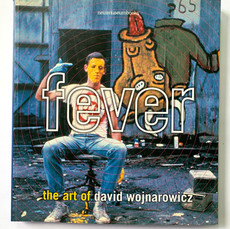

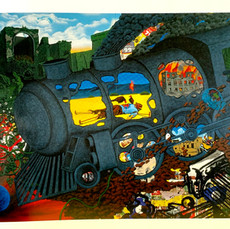



Fever: The Art of David Wojnarowicz
The first retrospective of Wojnarowicz’s work since his death in 1992 set out to reframe his multi-disciplinary practice in terms more closely related to a post-stylistic era in the art world. Along with paintings, photographs, videos, sculpture, music, spoken word, and a graphic novel, Fever was accompanied by a 150-page catalog, co-published by Rizzoli, with essays by Cynthia Carr, Dan Cameron, Mysoon Rizk and John Carlin, along with previously unpublished texts written by David Wojnarowicz.

Open House: Michael Smith and Joshua White
For many artists who’d been living in downtown Manhattan lofts since the 1970s, the late 1990s represented a time of reckoning, as real estate values soared and gentrification pushed countless artists to other boroughs and outside NYC altogether. Performance artist Michael Smith and legendary light artist Joshua White collaborated on an installation in the museum’s Public Access Gallery that fictionalizes this process through the story of a mid-career performance/video artist who’s selling his life’s work at discount prices before heading to greener pastures. Bittersweet and completely believable, the exhibition is an entire life story condensed in a moving sale.
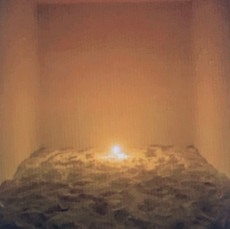


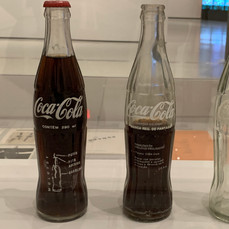
Cildo Meireles
One of the most recognized and influential Brazilian artists, Meireles (b. 1948) began his career in Rio de Janeiro as his country was ruled by a military dictatorship. Like others of his generation, he embraced conceptual practices as a way of communicating, using materials and structures that appealed directly to the senses. The exhibition included such key works as Red Shift, Volatil, How to Build Cathedrals, Virtual Spaces, Cinza and Glove Trotter. The 160-page catalog was published by Phaidon Press, with essays by Gerardo Mosquera (co-curator), Paulo Herkenhof and Dan Cameron, along with writings by Cildo Meireles.




Pierre et Gilles
(in collaboration with Yerba Buena Center for the Arts, San Francisco, CA)
This French photography team began collaborating in 1976, and quickly became known for a high-camp style that fuses an outwardly gay aesthetic with a more explicit interest in exposing the visual language of commercialized desire. Their work straddles the adjacent worlds of fashion, celebrity portraiture, and tableau photography, and the 120-page catalog, co-produced with Merrell, features a text by Dan Cameron.




Paul McCarthy
(in collaboration with Museum of Contemporary Art, Los Angeles, CA)
Los Angeles-based installation and performance artist McCarthy had long been an underground figure in the southern California art scene, and this mid-career survey exhibition at the New Museum was his first-ever museum retrospective, featuring such key works in his trajectory as Saloon Theater, Tokyo Santa, Painter, Pinocchio Pipenose Household Dilemma, Cultural Gothic, The Garden and Heidi. The 258-page catalog, published by Phaidon Press, contained essays by Dan Cameron, Amelia Jones and Anthony Vidler.




William Kentridge
(in collaboration with Museum of Contemporary Art, Chicago and San Francisco Museum of Modern Art
Beginning in South Africa during the late 1980s, the visual artist, animator and opera director William Kentridge (b. 1956) began making work that defied easy categorization, but embraced both puppet theater and handmade animated films, more than a half-dozen of which were presented in his first U.S. museum exhibition. The 160-page catalog, published in association with Harry N. Abrams, Inc, featured essays by Neal Benezra (co-curator), Staci Boris (co-curator), Lynne Cooke, and Ari Sitas, and an interview with the artist by Dan Cameron.

Wim Delvoye: Cloaca
With this single-work exhibition, the Belgian artist took even the most seasoned art viewers by surprise. Built from chemical beakers, electric pumps, and plastic tubing arrayed on a series of seven stainless steel tables, Cloaca was the result of a three-year collaboration between the artist and scientists at the University of Antwerp, whose shared mission was to duplicate all of the functions of the human digestive system as closely as possible over a 27-hour digestive trajectory.






Carroll Dunham: Paintings
Beginning in the early 1980s, Dunham’s exploratory abstractions began attracting a devoted group of collectors, critics and curators, and this mid-career survey brought together 32 paintings spanning the years 1982 to 2001. The 160-page catalog, published in partnership with Hatje Cantz, contains essays by Dan Cameron, Lisa Phillips (co-curator), Klauss Kertess, and Sanford Schwartz, and a new short story by A.M. Homes.




Jose Antonio Hernandez-Diez
(in collaboration with SITE Santa Fe, NM)
Inspired by urban pop culture as well as vernacular traditions of his native Venezuela, Hernandez-Diez evokes strong social and political statements through candid and poetic multimedia works. The first museum exhibition of the artist’s work in the United States, it was accompanied by a 96-page catalog with essays by Gerardo Mosquera, Monica Amor, Dan Cameron and Jesus Fuenmayor.

Aernout Mik: Refraction
(in collaboration with Hammer Museum, Los Angeles and the Museum of Contemporary Art, Chicago)
Presented in the main gallery space at the New Museum’s temporary home in Chelsea, the installation by Mik represented one of the Three M projects, centered new works co-commissioned and owned collectively by the three museums. Mik’s film recreates the setting of a major accident, in which people wander hopelessly, first responders come and go, and police direct the action, all without any evident casualties or wreckage.